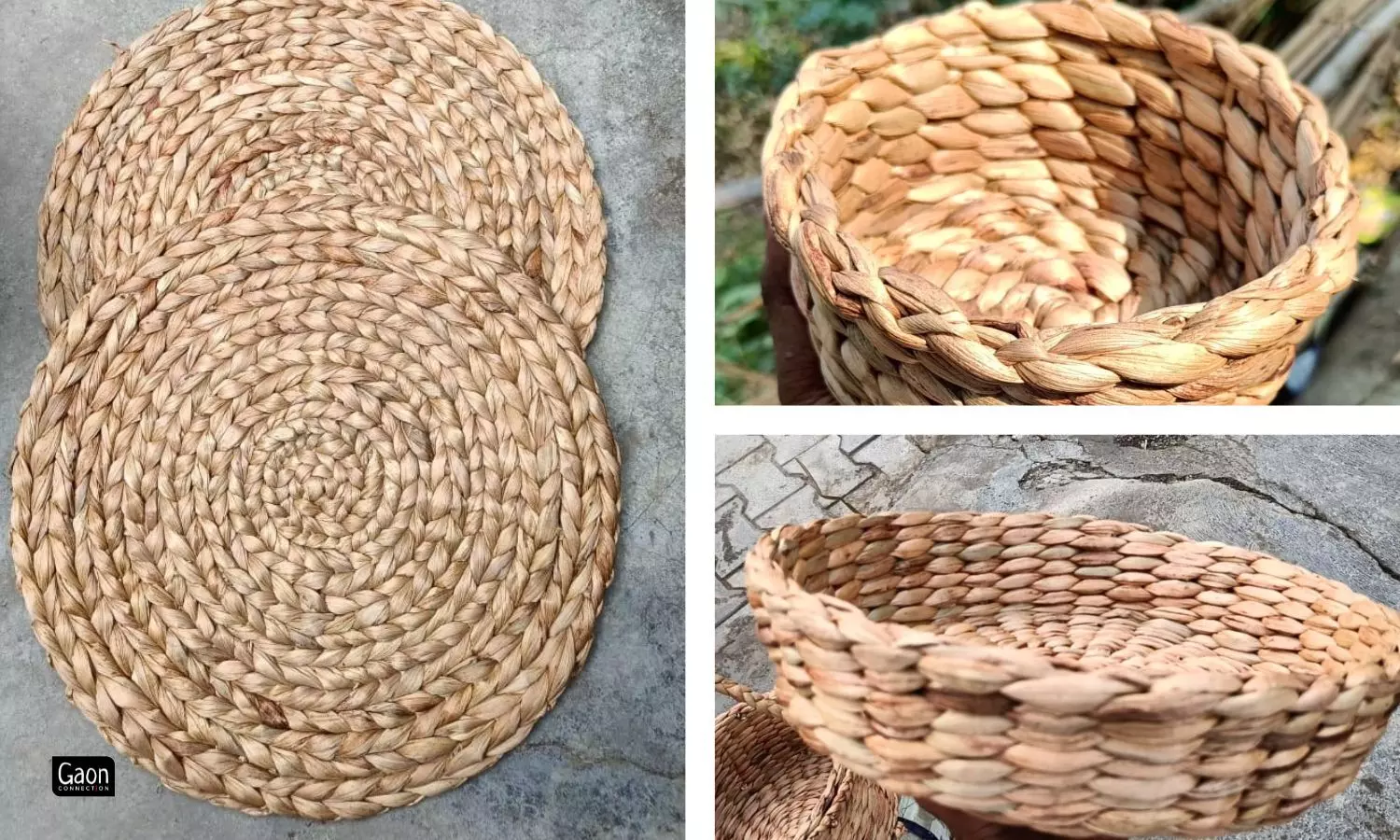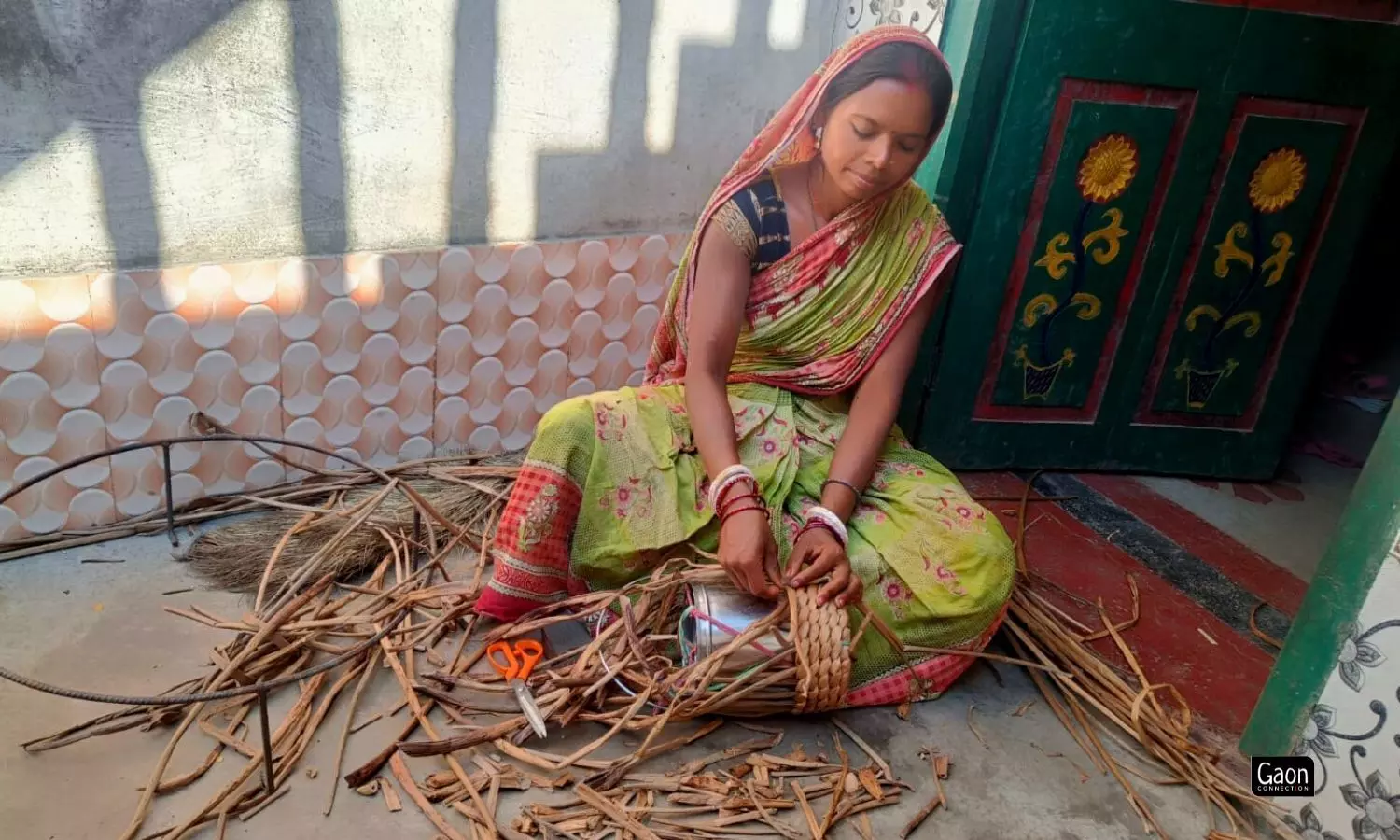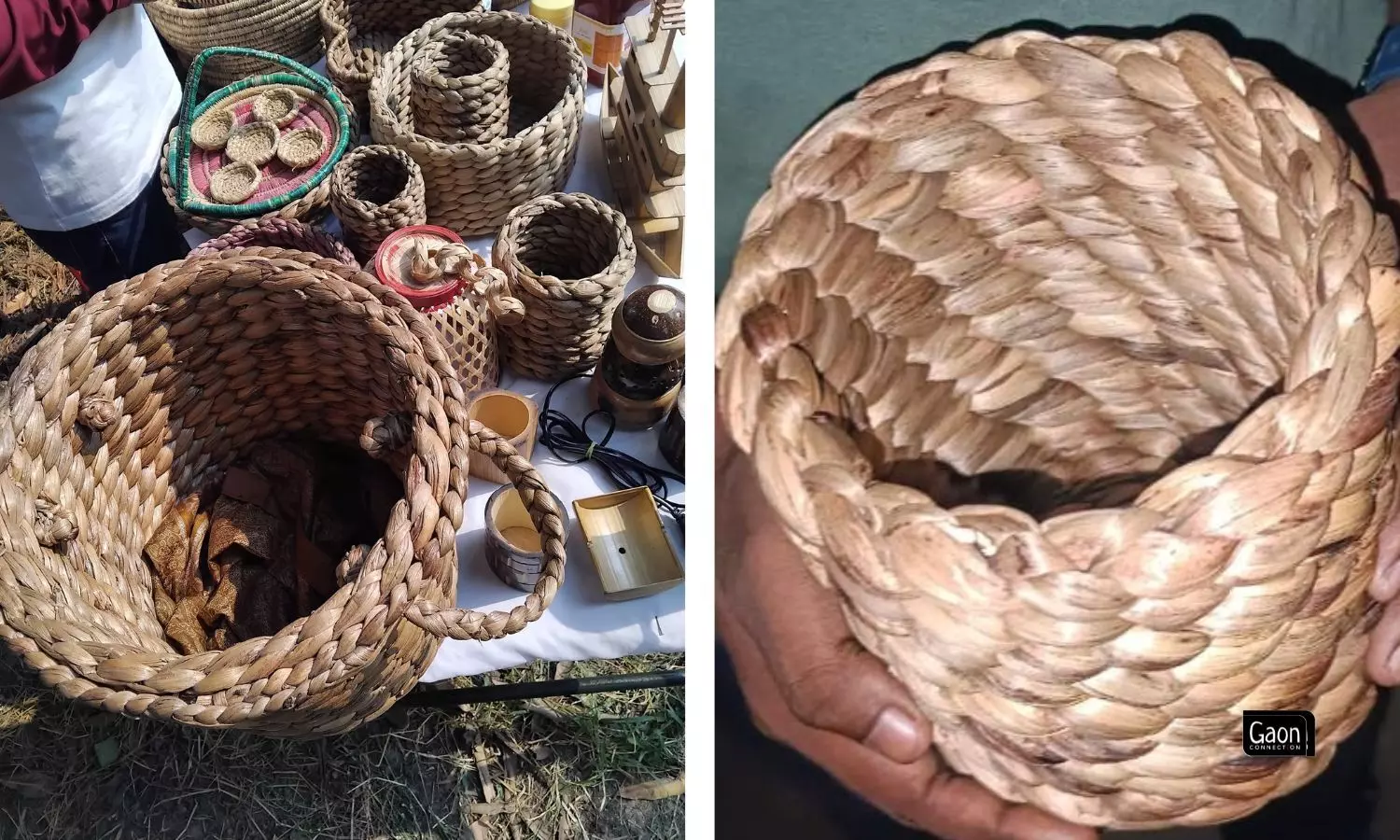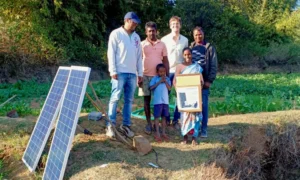The Indian government has roped in rural women for the conservation and rejuvenation of the Ganga river. More than 3,000 women in six states — Uttarakhand, Uttar Pradesh, Madhya Pradesh, Jharkhand, Bihar, and West Bengal — are involved in a unique river conservation and livelihood promotion project.
They are converting water hyacinth, an aquatic weed common in water bodies in India, into useful products, such as laundry baskets, plates, bowls, tea coasters, carry bags and foot mats, whose sale is helping them earn an additional income.
Shilan Devi is glad to be a part of the group of women in Jharkhand who are involved in the Jalaj project of the central government, which aims at creating a symbiotic relationship between Ganga and the people who live in the river’s basin. It also aims to link livelihood opportunities with the conservation of aquatic species.

They are converting water hyacinth into useful products, such as laundry baskets, plates, bowls, tea coasters, carry bags and foot mats.
For the past one year now, 40-year-old Shilan Devi of Maskalaiya village in Sahibganj district has been collecting water hyacinth from the water bodies in and around her village and converting them into various products. She has received training to make these eco-products.
“It is a tedious process to pluck the hyacinth from the pond as the lower part of the weed is deeply connected in the roots and can only be plucked through the sickle. It is then kept for drying under the sun and then I make things out of it,” she told Gaon Connection. The dried branches of water hyacinth are used to make products like laundry baskets, plates, bowls, etc, she explained.
Also Read: A village school that began in a cowshed is now an academy for Karbi tribe kids in Assam
“Since I started working and making products from jal kumbhi [water hyacinth] it has given me a sense of satisfaction and financial independence. I can earn up to Rs 6,000 a month depending on the demand for these products,” she added. Her husband works as a labourer and she has three children.

Shilan Devi is glad to be a part of the group of women in Jharkhand who are involved in the Jalaj project which aims at creating a symbiotic relationship between Ganga and the people.
It was last August when the Ministry of Jal Shakti launched an initiative — Jalaj — to create livelihood opportunities for those living along the bank of river Ganga and its tributaries through setting up facilities and training of local people for multiple economic activities.
The initiative has been launched at 26 sites along rivers Ganga, Yamuna, Gomati, Hooghly and Chambal in six states including Uttar Pradesh (11 sites), West Bengal (six sites), Bihar (five), Uttarakhand (two), Jharkhand (one) and Madhya Pradesh (one along river Chambal).
Dehradun-based Wildlife Institute of India (WII), an autonomous institute under the environment ministry, is supporting the Indian government in the implementation of the project by working with the local communities.
As part of Jalaj project, centres named as Jalaj Utsavi Mahila Samooh have been opened up for training women to make products out of water hyacinth. Shilan Devi is a part of one such women’s group in Jharkhand.
“The products made by the women in Jharkhand include dustbin, baskets, pen stand, planters, laundry baskets, plates, bowls, tea coasters, carry bags and foot mats. The minimum price of the product is Rs 300 and then it varies from product to product,” Mayank Ojha, 26-year-old Project Assistant Coordinator at the Wildlife Institute of India, told Gaon Connection.

“We want to preserve the aquatic ecosystem and in order to do that we thought of removing the water hyacinth from the ponds and making products out of it,” said Ojha
Ojha has been working on the Jalaj project since the beginning and has held various training programmes and workshops for rural women.
Also Read: These Hill Women Who Were Ridiculed for Their Door-to-Door Sales, Now Run a Successful Enterprise
“We want to preserve the aquatic ecosystem and in order to do that we thought of removing the water hyacinth from the ponds and making products out of it. The aim is to provide livelihood to rural people and help the rural women to be financially independent,” said Ojha.
As part of the project, WII has developed a training cadre of volunteers from the local community who are known as Ganga Praharis. These Ganga Praharis work with the local communities on biodiversity conservation and river rejuvenation.
The Jalaj Utsavi Mahila Samooh centres provide training and hold workshops for the rural women. At these centres, women learn to make jal kumbhi products from the Ganga Praharis and then make them at their village by collecting the weed.
According to Ojha, at present there are a total of 26 such centres under the project and one of them is in Jharkhand. This centre has about 150 women attached to it.

Some products made out of water hyacinth that are being sold. P.C- Sunil Jha’s Facebook account.
Explaining the process of making products out of water hyacinth, 27-year-old Barun Kumar, a Ganga Prahari (volunteer) with the Jalaj project in Sahibganj district, said that the women cover a short distance from their homes to the nearby ponds and rivers to collect jal kumbhi.
“Hyacinth is usually found in the nearby ponds or rivers, and villagers carry it home. The branches of hyacinth are kept in the sun to dry and then converted into shapes,” explained Kumar.
Also Read: Rural Women in Baramulla Discover Joy in Making Jam
“We have to keep adding water into it so that it doesn’t dry up fully and some amount of moisture is there. The accumulated hyacinth is then converted into different shapes and kept in the sun to dry completely. The products dry up in two to three days depending on the sunlight,” Kumar added.
Jalaj project has also set up some selling points where women regularly sell their products directly to the customers. They also participate in trade fairs and exhibitions and showcase their products.
According to Shilan Devi, the pen stands and baskets are in great demand in the market.


















